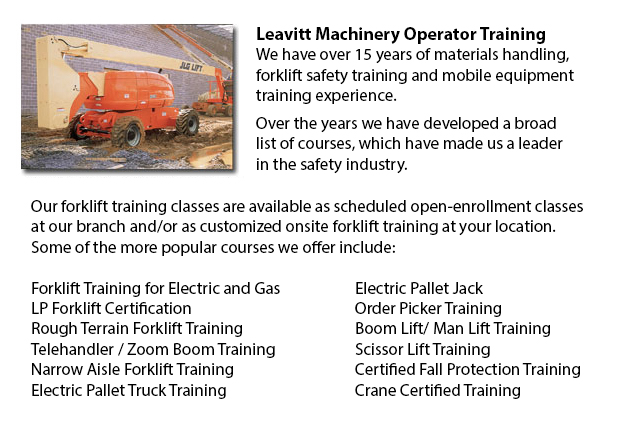
Nanaimo Aerial Platform Training - Aerial lifts might be used to accomplish many different duties performed in hard to reach aerial spaces. Many of the duties associated with this kind of lift include performing routine preservation on buildings with elevated ceilings, repairing phone and utility lines, lifting burdensome shelving units, and trimming tree branches. A ladder could also be used for many of the aforementioned jobs, although aerial hoists provide more safety and strength when properly used.
There are several distinctive types of aerial lifts accessible, each being able to perform slightly different tasks. Painters will usually use a scissor lift platform, which is able to be utilized to reach the 2nd story of buildings. The scissor aerial platform lifts use criss-cross braces to stretch out and lengthen upwards. There is a table attached to the top of the braces that rises simultaneously as the criss-cross braces elevate.
Cherry pickers and bucket lift trucks are a different variety of the aerial lift. Typically, they contain a bucket at the end of an elongated arm and as the arm unfolds, the attached bucket lift rises. Forklifts use a pronged arm that rises upwards as the handle is moved. Boom lifts have a hydraulic arm that extends outward and lifts the platform. All of these aerial lifts require special training to operate.
Through the Occupational Safety & Health Association, also labeled OSHA, instruction courses are offered to help make certain the employees satisfy occupational values for safety, machine operation, inspection and repair and machine weight capacities. Employees receive certification upon completion of the course and only OSHA qualified workers should operate aerial lift trucks. The Occupational Safety & Health Organization has developed rules to uphold safety and prevent injury while utilizing aerial lift trucks. Common sense rules such as not using this piece of equipment to give rides and ensuring all tires on aerial hoists are braced in order to hinder machine tipping are referred to within the guidelines.
Sadly, statistics expose that more than 20 aerial lift operators pass away each year while operating and nearly ten percent of those are commercial painters. The majority of these incidents were triggered by inadequate tie bracing, hence some of these may well have been prevented. Operators should ensure that all wheels are locked and braces as a critical safety precaution to prevent the device from toppling over.
Marking the encompassing area with visible markers have to be utilized to safeguard would-be passers-by so they do not come near the lift. Moreover, markings must be set at about 10 feet of clearance between any electrical cables and the aerial lift. Lift operators must at all times be appropriately harnessed to the hoist when up in the air.
-
Nanaimo Boom Lift Certification
Nanaimo Boom Lift Certification - Using elevated work platforms allow for maintenance operations and work to be carried out at elevated work heights which were otherwise not reachable. Workers making use of scissor lifts and boom lifts can learn how... More -
Nanaimo Boom Lift Safety Training
Nanaimo Boom Lift Safey Training - Boom lifts are a kind of aerial lifting device or elevated work platform which are commonly used in industry, warehousing and construction. Boom lifts could be utilized in practically whichever environment because o... More -
Nanaimo Loader Operator Training
Nanaimo Loader Operator Training - Loader Operator Training - Forklift training is a prerequisite within North America and is intended to prevent workplace death and injuries. Lift truck training provides driver training intended for forklift operato... More -
Fall Protection Certification in Nanaimo
There are high numbers of injuries at work associated to falling and lots of fall-related deaths reported each and every year. Most of these instances might have been prevented with better training, better measures in place, and by properly equipping... More -
Nanaimo Crane Ticket
Nanaimo Crane Ticket - The modern version of a crane can be either complex or simple, and cranes vary based on their use. Mobile cranes, for example are rather simple. A telescopic boom or steel truss mounts its movable platform. A system of levers o... More -
Operator Safety Certification | Re-Qualification Certification | In-House Instructor Certification in Nanaimo
Lift trucks are used in practically all industrial construction sites and in warehouse operations and in boat yards. The reach feature of a forklift is a very important part utilized in several applications like when a shelving system is being used t... More -
Aerial Lift / Boom Lift / Man Lift / Scissor Lift Certification in Nanaimo
Scissor hoists are lift tables which lift up materials and individuals and supplies vertically. They are normally used in construction, commercial and industrial environments. A common use of scissor hoists is for lowering or lifting construction sup... More -
Crane / Overhead Crane / Self-Erect Crane / Truck Mounted Crane / Hydraulic Cranes Certification in Nanaimo
Bridge cranes or likewise called overhead cranes are a type of industrial material handling crane utilizing a line and hook apparatus that runs on a horizontal beam running along two widely separated rails. Several overhead cranes can be seen inside... More

Forklift Certification Nanaimo
TOLL FREE: 1-888-254-6157
Nanaimo, British Columbia
forkliftcertificationnanaimo.com
Email Us
About Us


